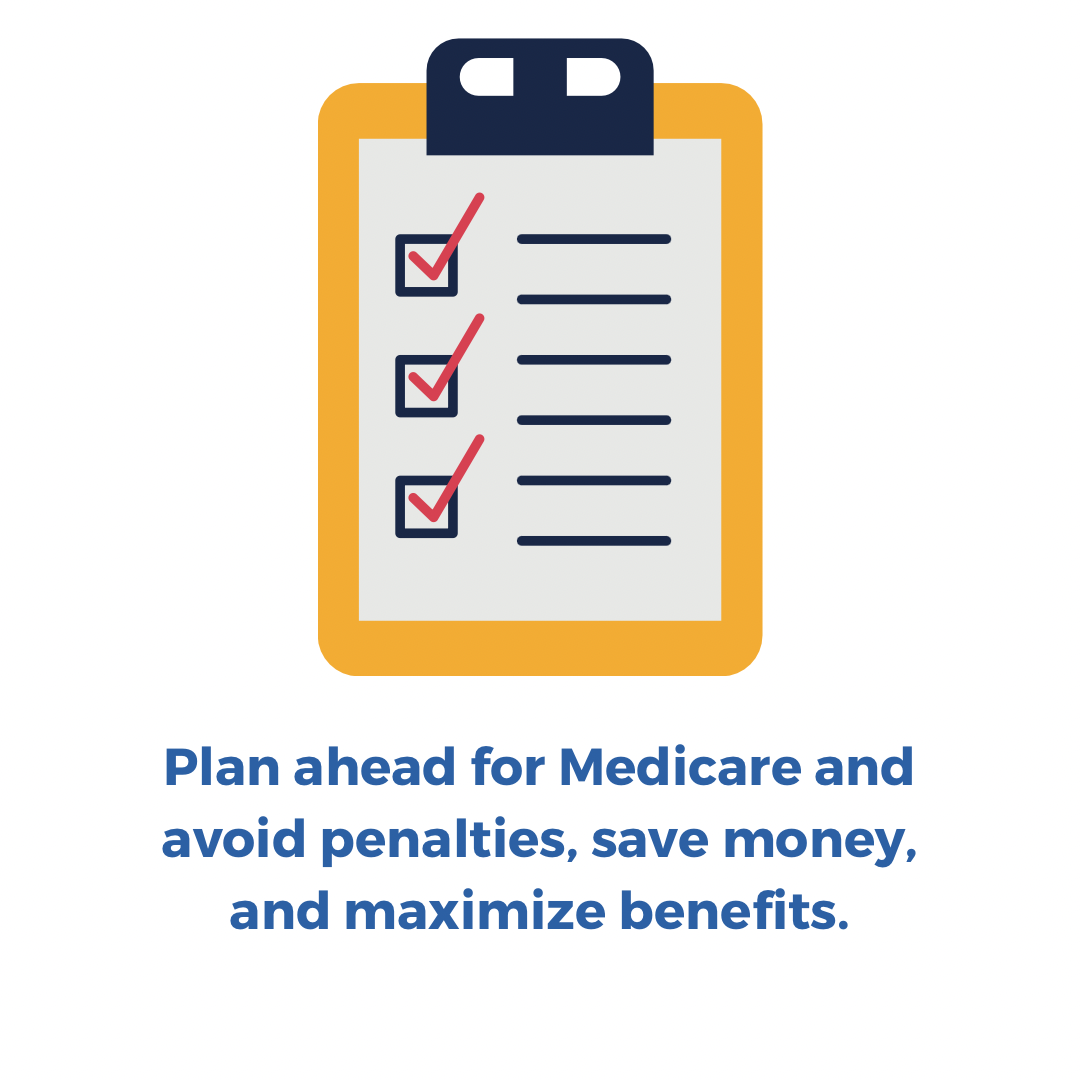
Key Takeaways
- Medicare Special Enrollment Periods allow beneficiaries to change their Medicare Advantage or Part D coverage outside of the Annual Enrollment Period.
- Qualifying life events, such as moving, losing employer coverage, or being diagnosed with a chronic condition, can trigger an SEP.
- When changing plans during an SEP, it’s essential to compare your options, consider factors like premiums and provider networks, and follow the specific steps and timeframes for your qualifying event.
Are you a Medicare beneficiary looking to make changes to your coverage outside of the Annual Enrollment Period (AEP)? While the AEP, which runs from October 15 to December 7 each year, is the primary time to enroll in, switch, or drop Medicare Advantage and Part D plans, certain life events may qualify you for a Special Enrollment Period (SEP). An SEP allows you to change your Medicare insurance at different times throughout the year, ensuring you have the flexibility to adapt your coverage to your changing needs.
Understanding Medicare Special Enrollment Periods
A Medicare Special Enrollment Period is a designated time outside of the Annual Enrollment Period when you can make changes to your Medicare Advantage (Part C) or Prescription Drug (Part D) coverage. SEPs are triggered by specific life events, such as moving, losing employer-sponsored insurance, or being diagnosed with a chronic condition.
It’s essential to understand the different types of SEPs and the changes permitted during each one. Some common SEPs include:
- Moving out of your plan’s service area
- Losing employer or union-based group health coverage
- Qualifying for Medicaid or Extra Help
- Being diagnosed with a chronic condition that qualifies you for a Special Needs Plan (SNP)
Each SEP has its own set of rules and timeframes for making coverage changes, so it’s crucial to familiarize yourself with the requirements for your specific situation. For example, if you move out of your plan’s service area, you typically have two months after the move to switch to a new plan that serves your new location. On the other hand, if you lose your employer-sponsored coverage, you usually have a two-month window after the loss of coverage to enroll in a Medicare Advantage or Part D plan.
Understanding the different types of SEPs and their associated rules is key to ensuring you don’t miss your opportunity to make necessary changes to your Medicare coverage. If you’re unsure whether you qualify for an SEP or have questions about the process, it’s always a good idea to reach out to a trusted Medicare advisor or your local SHIP for guidance.
Qualifying Life Events for Medicare SEPs
Several life events can trigger a Medicare Special Enrollment Period, allowing you to change your Medicare Advantage or Part D plan outside of the Annual Enrollment Period. These events include:
- Moving: If you move out of your current plan’s service area or into a facility like a nursing home, you may qualify for an SEP to switch plans.
- Losing coverage: If you lose your employer-sponsored health insurance, you may be eligible for an SEP to enroll in a Medicare Advantage or Part D plan.
- Medicaid or Extra Help eligibility: If you become eligible for Medicaid or Extra Help (a program that helps pay for prescription drug costs), you can enroll in or change your Medicare Advantage or Part D plan during an SEP.
- Chronic condition diagnosis: If you’re diagnosed with a chronic condition that qualifies you for a Special Needs Plan (SNP), you can enroll in an SNP during an SEP.
It’s important to note that the timeframe for each SEP varies depending on the qualifying event. For example, if you move, you typically have 2 months after the move to change your plan, while if you lose employer coverage, you have 2 months after the loss of coverage to enroll in a new plan.
Comparing Medicare Advantage Plan Options During an SEP
If you qualify for a Special Enrollment Period, it’s essential to compare your Medicare Advantage plan options to ensure you’re getting the best coverage for your needs and budget. When evaluating plans, consider factors such as:
- Monthly premiums
- Deductibles and copayments
- Provider networks
- Prescription drug coverage
- Additional benefits, such as dental, vision, or hearing coverage
Tools like the Medicare Plan Finder can help you compare plans in your area and estimate your out-of-pocket costs based on your specific healthcare needs. It’s also a good idea to reach out to a trusted Medicare advisor or your State Health Insurance Assistance Program (SHIP) for guidance in navigating your options during an SEP.
Making the Switch: Steps to Change Your Medicare Plan During an SEP
Once you’ve determined that you qualify for a Special Enrollment Period and have compared your plan options, it’s time to make the switch. Here are the steps to change your Medicare plan during an SEP:
- Gather necessary information: Have your Medicare number, current plan information, and details about your qualifying life event ready.
- Contact the new plan: Reach out to the Medicare Advantage or Part D plan you want to enroll in and provide them with your information and SEP details.
- Confirm your enrollment: The new plan will process your enrollment request and send you a confirmation letter. Make sure to review the letter carefully to ensure your coverage details are correct.
- Cancel your old plan: If you’re switching from one Medicare Advantage or Part D plan to another, your new plan will automatically disenroll you from your previous plan. However, if you’re changing from Original Medicare to a Medicare Advantage plan, you’ll need to notify your previous plan of the change.
Remember, the specific steps and timeframes for changing your plan during an SEP may vary depending on your qualifying event and the plans available in your area.
Considerations When Changing Medicare Plans Outside of AEP
While Special Enrollment Periods provide flexibility for changing your Medicare coverage, there are some important considerations to keep in mind:
- Limited plan options: Depending on your SEP and location, you may have fewer Medicare Advantage or Part D plans to choose from compared to the Annual Enrollment Period. Some plans may not be available for enrollment outside of the AEP, so it’s essential to research your options carefully and ensure that the plans you’re considering meet your healthcare needs and budget.
- Timing restrictions: Each SEP has its own timeframe for making coverage changes, so it’s crucial to act promptly once your qualifying event occurs. If you miss your SEP window, you may have to wait until the next Annual Enrollment Period to make changes to your Medicare coverage, which could leave you with a plan that no longer suits your needs or budget.
- Potential coverage gaps: If you don’t enroll in a new plan during your SEP, you may face gaps in your coverage until the next Annual Enrollment Period. This could lead to higher out-of-pocket costs for your healthcare services and medications, as well as potential penalties for late enrollment in some cases.
- Impact on other coverage: Changing your Medicare Advantage or Part D plan may affect other aspects of your healthcare coverage, such as supplemental insurance or Medicaid benefits. Before making any changes to your Medicare plan, it’s important to consider how it may impact your other coverage and ensure that you’ll still have access to the benefits and services you need.
It’s always a good idea to consult with a Medicare expert or your SHIP before making any changes to your coverage to ensure you’re making the most informed decision for your unique situation. They can help you navigate the complexities of Medicare, compare your plan options, and avoid potential pitfalls when changing your coverage outside of the Annual Enrollment Period.
Get Help with Medicare Special Enrollment Periods from Local Medicare Agents – LMA Insurance
Navigating Medicare Special Enrollment Periods can be complex and overwhelming, but you don’t have to do it alone. The experienced team of local medicare agents in Fresno at Local Medicare Agents – LMA Insurance is here to guide you through the process and help you make informed decisions about your Medicare coverage. With their extensive knowledge of Medicare rules and regulations, they can help you understand your options, compare plans, and enroll in the coverage that best fits your needs and budget. Whether you’re facing a qualifying life event or simply have questions about your Medicare benefits, Local Medicare Agents – LMA Insurance is your trusted partner in healthcare. Contact them today to schedule a consultation and take the first step towards seamless Medicare coverage transitions
FAQs
What is a Medicare Special Enrollment Period?
A Medicare Special Enrollment Period (SEP) is a designated time outside of the Annual Enrollment Period when you can make changes to your Medicare Advantage (Part C) or Prescription Drug (Part D) coverage. SEPs are triggered by specific life events, such as moving, losing employer-sponsored insurance, or being diagnosed with a chronic condition.
How long do I have to change my Medicare plan during an SEP?
The timeframe for changing your Medicare plan during an SEP varies depending on the qualifying event. For example, if you move, you typically have 2 months after the move to change your plan, while if you lose employer coverage, you have 2 months after the loss of coverage to enroll in a new plan.
Can I switch from Original Medicare to a Medicare Advantage plan during an SEP?
Yes, if you experience a qualifying life event that triggers an SEP, you can switch from Original Medicare to a Medicare Advantage plan. However, keep in mind that you’ll need to notify your previous plan of the change, as it won’t be automatically cancelled like when switching between Medicare Advantage plans.
What if I miss my Special Enrollment Period?
If you miss your Special Enrollment Period, you may have to wait until the next Annual Enrollment Period (October 15 – December 7) to make changes to your Medicare coverage. In some cases, you may also face gaps in your coverage or penalties for late enrollment. It’s crucial to act promptly once your qualifying event occurs to avoid these potential issues.
How can I compare Medicare plans during an SEP?
You can compare Medicare plans during an SEP using tools like the Medicare Plan Finder, which allows you to search for plans in your area and estimate your out-of-pocket costs based on your specific healthcare needs. You can also reach out to a trusted Medicare advisor or your State Health Insurance Assistance Program (SHIP) for guidance in navigating your options during an SEP.

 Can You Have Two Medicare Drug Plans? Understanding Coverage Rules and Limitations
Can You Have Two Medicare Drug Plans? Understanding Coverage Rules and Limitations